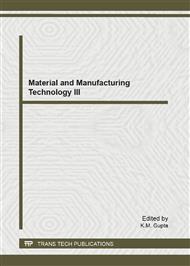p.328
p.333
p.341
p.345
p.349
p.357
p.363
p.367
p.372
Simulation and Optimization on the Process of Acetic Acid Dehydration via Extraction Combined with Azeotropic Distillation
Abstract:
Some azeotropic entrainers in the process of acetic acid dehydration could extract acetic acid from its dilute solution; this text would observe the ability of extraction about these entrainers mentioned in the literatures. By using the EXTRACT module in Aspen Plus, it is found that isopropyl acetate was the most effective extracting agent. The process of acetic acid dehydration via extraction combined with azeotropic distillation by using isopropyl acetate was established. Acetic acid was first extracted from its dilute solution and then was distilled in the azeotropic column, finally acetic acid having 99.8%(weight percent) purity was obtained. This process avoided evaporating a lot of water from the solution, and the entrainer’s existence effectively enhanced the relative volatility between acetic acid and water. The simulation result indicated that when dealing with the acetic acid solution used in this research, the total heat exhaustion was reduced from 11.73MW to 2.98MW and the number of theoretical plates needed in the distillation was also reduced from 65 to 34 compared with simple distillation.
Info:
Periodical:
Pages:
349-354
Citation:
Online since:
July 2012
Authors:
Keywords:
Price:
Сopyright:
© 2012 Trans Tech Publications Ltd. All Rights Reserved
Share:
Citation:


